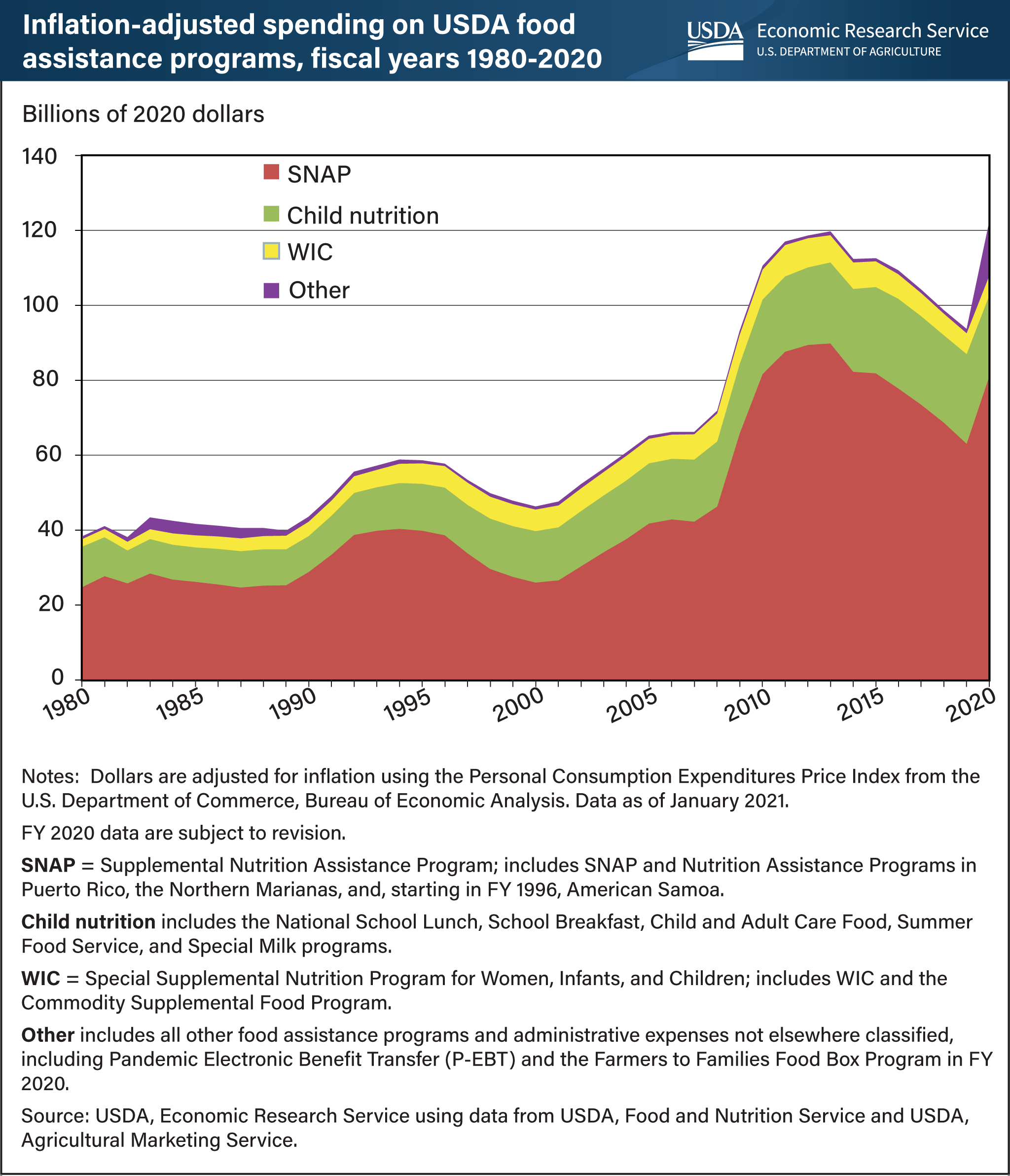Federal spending on food assistance reached record high of $122.1 billion in 2020
- by Jordan W. Jones, Saied Toossi and Leslie Hodges
- 4/23/2021

Errata: On June 3, 2022, the text and chart notes were revised to correctly identify the Special Supplemental Nutrition Program for Women, Infants, and Children (WIC).
Spending on USDA’s food and nutrition assistance programs jumped 30 percent in fiscal year (FY) 2020 to an inflation-adjusted record of $122.1 billion, abruptly reversing a six-year decline. This increase reflects the expanded need for food assistance during the COVID-19 pandemic and the subsequent Federal response to meet that need. This response included USDA waivers allowing flexibility in the administration of the Department’s 15 existing food and nutrition assistance programs and the creation of two programs, Pandemic Electronic Benefit Transfer (P-EBT) and the Farmers to Families Food Box Program (Food Box Program). The rise in FY 2020 expenditures was driven by increased spending on these two new programs, as well as the Supplemental Nutrition Assistance Program (SNAP). Special Supplemental Nutrition Program for Women, Infants, and Children (WIC) expenditures remained relatively unchanged while pandemic-induced disruptions in the operation of schools, childcare centers and daycare homes led to declines in child nutrition spending. This chart is based on data available on the USDA, Economic Research Service’s (ERS) General Overview of Food Assistance and Nutrition Programs webpage, updated April 2021.

